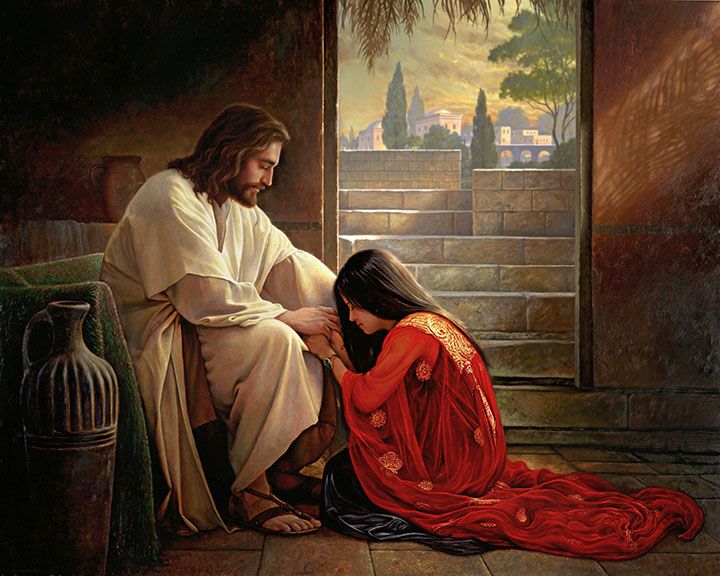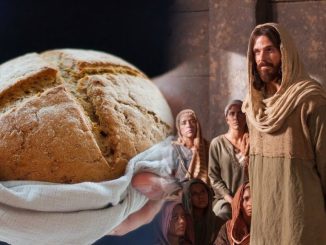
In just a few more days, we will be celebrating Christmas. More than just another date on the calendar, it commemorates one of the most significant events in our history apart from the crucifixion and resurrection during the Holy Week.
Christmas reminds us of the coming of Jesus Christ. In Christ, we find both the Lamb of God and the Savior of the World. There is no better time than the Advent season to reflect on the role of Christ in our lives, first by knowing Him as the Lamb of God, and then perhaps more importantly, as the Savior and Hope of the world.

The Lamb of God
As a reference to Jesus, Lamb of God connotes the sacrifice for human sin accomplished in Jesus’s death. The phrase links Jesus to Isaiah’s description of the Suffering Servant, suggesting that the Messiah, who will save His people not through political leadership but through something closer to the Old Testament’s use of lambs for sacrifice.
We find the phrase “Lamb of God” specifically in John 1:29, from the mouth of John the Baptist. In it, John the Baptist refers to Christ as the One who would take away the sin of the world. John identified Jesus as Lamb of God at His baptism and then again the day after (John 1:36). What did John the Baptist mean by it?

In the Old Testament, lambs were sacrificed daily in the temple (Leviticus 3:6-7). The animal was to be without defects. The rite illustrated one of the Bible’s deep mysteries. The removal of moral blame and guilt required blood. Someone or something must die in place of the person, the actual sinner – in the Old Testament system, a lamb or other animal died.
Another more proable link to John’s declaration is the significant event known as the Passover, celebrated in remembrance of the exodus from Egypt. God had instructed all the Hebrews to “take a lamb” (Exodus 12:3), kill it, and sprinkle its blood on the doorframes of each home to save the family living there from the last plague. For John to identify Jesus as the Lamb of God became, then, a bold, audacious claim that was sure to upset, indeed redefine, the religion of Israel. This rabbi, named Jesus, John’s cousin, was the equivalent of the Passover lamb, the Savior of the Israelites.

In Isaiah 9:6-7, the prophet Isaiah foretold the first advent of Christ but he describes it cryptically as the coming of a child destined for great things. He went on to describe this character later on in Isaiah 53 in such a way as One who has come to be known as the Suffering Servant. There are the faintest threads of prophecy yet who else fits this description? Jesus would come and He alone bore the sins of the world centuries later. Isaiah’s “servant” fits Jesus very well, for Christ had indeed come and suffered and taken away the sins of the world. The Son of the Most High came as a servant so that mankind may have eternal life, and on the third day after His crucifixion He would rise again as the Eternal King.
Long before, during the days of Abraham, there was a prefiguring of this event when a lamb had been discovered to take Isaac’s place at the altar: “God Himself will provide the lamb” (Genesis 22:8), Abraham explained to his young son in a remarkable act of faith and obedience.

Besides the first advent, Scripture also points to Christ’s future significance as the Lamb of God. Revelation 5:6 uses a lamb to picture the victorious Christ. About Him the heavenly chorus sings: “Worthy is the Lamb, who was slain” (Revelation 5:12).
Because the Passover was the preeminent Jewish celebration, we are safe to conclude that it was in John the Baptist’s mind as he spoke of Jesus. But the full Bible picture of the sacrificial lamb provides a portrait of Jesus as obedient, submissive to the will of the Father, and substitute for the sins of everyone, the last sacrifice. After Jesus, no more blood is required to remove sin. All who believe are covered in His. In becoming the Lamb of God, Christ became also the Savior and Hope of the World.
The Savior and Hope of the World
Encapsulated in the title of Savior and Hope of the World is Jesus’ role as the One who brings humanity out of calamity from sin and into peace of reconciliation with God through the cross. Throughout the Bible, there is one overarching common thread; the story of God saving sinful people through Jesus. How apt it is then this title of Jesus as Savior (Luke 2:11; 2 Timothy 1:10), since a savior is a person who delivers an individual or group out of certain calamity. A similar title would be “rescuer”. By considering the concept of the word, its Old Testament use, and its comparison to the Roman use, we can understand what it means for the Bible to call Jesus the “Savior”.

Jesus Christ is a Savior because He came to save His people from their sins (Matthew 1:21). The sin of humans had placed a curse upon the earth (Romans 8:20) and incurred a punishment from God upon those who sin. The punishment was the curse of death (Romans 6:23). Mankind had no way to save themselves, for the sacrifices of animals could never bring lasting forgiveness of sins (Hebrews 10:3-4). Thus Jesus had come as the Lamb of God, living a perfect life and offering up His life as a sin offering for the people of God, both Jews and Gentiles (Romans 3:21-26).
In a theological context, Jesus is the Savior of the world because He had made it possible for sinners to come to the saving knowledge of God. He has reconciled sinners to God and has also reconciled the universe to God (Colossians 1:20). All those who place their trust in Christ receive this reconciliation, and the gospel message is the urging of the reception of this reconciliation (2 Corinthians 5:20).

Much earlier, the idea of Savior had already evoked Old Testament imagery. The word “Savior” had often appeared in the Old Testament when referring to God (Deuteronomy 32:15; 1 Chronicles 16:35). God would deliver His people from calamity, both on the national (Nehemiah 9:27; Psalm 68:19; 79:9) and on individual levels (Psalm 18:46). In fact, the prophets declared that the people were waiting for God to act as their Savior in the future (Isaiah 62:11; Micah 7:7) and that He is the only Savior (Isaiah 43:11; Hosea 13:4). This prophecy about the coming Savior would begin to come to pass during the first Christmas.
Significantly, following on from the Old Testament understanding, in proclaiming Jesus Christ as the Savior, the New Testament implies Christ’s divinity, God saving His people. Mary cried out to God in this sense in Luke 1:47, but then Jesus was proclaimed as the Savior in Luke 2:11. In fact, Titus 2:13 uses both God and Savior as titles for Jesus Christ. Christmas therefore, is a celebration of the coming of the Savior that would resound for all time.

The first advent of Jesus occurred during the time of the Roman empire in which there was a cult of personality centering around the Roman emperor as the “savior of the world”. Augustus, the Roman emperor at the time, was considered a savior because he brought peace to the Roman empire. But while Augustus brought peace in Rome through conquest and oppressive rule, Jesus Christ brings peace with God (Romans 5:1) through serving others, giving His life as a ransom (Mark 10:45), and forgiving sins (Acts 5:31). This understanding is especially powerful in Philippians 3:20, a letter written to a Roman colony.
Jesus Christ as Lamb of God and Savior of the World
When we declare and confess Jesus as our Savior, we remember that our sins are forgiven but also that we are to obey Him as our God and our King as we wait for Him to come again (Titus 2:11-14), growing in our knowledge of Him (2 Peter 3:18). We also must never forget God’s desire to be the Savior of all people, not just a few (1 Timothy 2:3-4), prompting us to pray that others might come to know Jesus as their Savior and to share the message with all whom we meet.
Like Mary, our spirits should rejoice greatly because God our Saviour had come and delivered us from our humble estate (Luke 1:46-49). Let this Christmas be a time in which we witness for Christ.
This sharing is guided throughout by a book on Biblical concepts published by Barbour Publishing.
|Share The Good News|




Leave a Reply